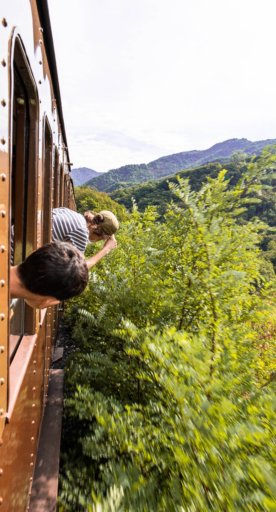

Walking through history: routes, insights and attractions in industrial Tuscany
Discovering a lesser-known side of the region, comprised of labor, ingenuity and landscape transformations
Industrial activity shaped the land and led to social and economic transformations that in turn shaped modern Tuscany. Whether it is a hike exploring the marble quarries, a journey into the textile tradition of the Val di Bisenzio, or a path dedicated to the remembrance of war, walking through Tuscan industrial history is a fascinating and culturally rich experience. Here are some evocative routes combining nature and historical memory.
-
1.Wool and Silk Way in the Bisenzio Valley
-
2.Carrara marble quarries
-
3.The Via della Carta in Pescia
-
4.Gothic Line and SMI Shelters of Campo Tizzoro
Wool and Silk Way in the Bisenzio Valley

The historic Wool and Silk Way connects Prato to Bologna, retracing the ancient route of textile goods between the regions of Tuscany and Emilia. In the Val di Bisenzio, this itinerary winds its way through fulling and wool mills and factories telling the story of the region’s extensive textile tradition. Walking along the Bisenzio River means discovering ancient mills and factories, now converted and some still active. The route passes through villages such as Vaiano and Vernio, where it is possible to visit the MUMAUT - Museum of Textile Machinery, and admire the striking remnants of the fulling mills and impressive hydraulic systems that were essential for processing textiles.
Carrara marble quarries

The Apuan Alps hold a white treasure that has spanned centuries of history: the marble of Carrara. Active since Roman times, the quarries offer a unique spectacle, with dizzying, shimmering walls of rock from which the raw material was extracted to create some of the world’s most celebrated works of art. An excursion to this area allows you to visit historic quarries, some of which are still in operation, along with the Museum of Marble in Carrara, which chronicles the evolution of quarrying and processing techniques. Trekking enthusiasts can travel scenic trails that wind through the mountains, for example, those that set out from the village of Colonnata, offering breathtaking vistas of the valleys and the Tyrrhenian coastline.
The Via della Carta in Pescia

Pescia is the beating heart of the Tuscan papermaking tradition, an ancient art rooted in the Middle Ages. The Via della Carta (Paper Way) allows you to explore the symbolic places of this craft production, from the ancient paper mills along the Pescia River to the Paper Museum in Pietrabuona, where you can observe handmade papermaking techniques. The route also offers the opportunity to be immersed in an enchanting river landscape, with stone bridges and historic mills, harking back to a time when Tuscan paper was renowned throughout Europe.
Gothic Line and SMI Shelters of Campo Tizzoro

For those interested in more recent history, the routes along the Gothic Line and the shelters of the Società Metallurgica Italiana (SMI or Italian Metallurgical Society) at Campo Tizzoro in the municipality of San Marcello Piteglio represent a journey into the remembrance of World War II. The Italian Metallurgical Society was an important munitions factory, fundamental to the economy of the Pistoia Mountains in the last century. The museum and air raid shelters, dug under the factories to protect workers and civilians from bombings, can be visited today through itineraries that tell the industrial and wartime history of the area. Walking along what remains of the Gothic Line means exploring mountain trails that pass through trenches, fortifications and open-air museums, observers to a past that deeply marked the territory.
The museum is temporarily closed to the public.

































